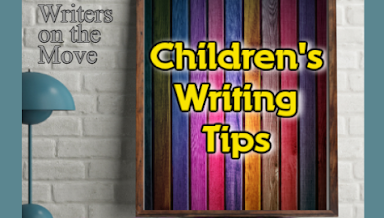 |
| An early morning bike ride among the banyan trees is a great way to start your day in south Florida where I live. |
It is no big secret that exercise, proper nutrition, getting plenty of rest and drinking lots of water throughout the day is a proven recipe for health.
And good health is most important for writers who must sit and work for sometimes long hours, day after day.
But, regarding exercise, is there a particular time of day when working out or staying physically active will deliver greater rewards?
The answer to that question seems to be "yes", and the time you should be exercising is in the morning.
When you are productive in any area of your life, you enjoy less stress and anxiety, more happiness and a sense of fulfillment, and more success.
Writers like Elin Hilderbrand exercise in the morning. Hilderbrand says she runs 8 to 10 miles every morning, not only to stay in shape, but to stay disciplined. And this discipline carries over to other areas of her life, including her writing.
To boost your productivity, get active more often.
Jogging, taking a walk, lifting weights, cycling, and performing yoga or Pilates will give you more energy than if you are sedentary, which will naturally lead to better productivity.
When you schedule that exercise in the morning, you supercharge that productivity.
Los Angeles writer Nina Revoyr has to work in her exercise around her writing and her job as the Executive Director of Ballmer Group’s philanthropic efforts in Los Angeles County and California, which are aimed at improving economic mobility for children and families disproportionately likely to remain in poverty. She prefers morning workouts, saying, "I work out when on I'm on a normal routine four or five days a week. I prefer to work out early in the morning before the day gets started."
And writer Carol Rice of makealivingwriting.com advises writers to, "Exercise first thing." She says, "My best-case scenario is to go for a one-hour mostly uphill walk before I sit down at my desk."
So why is morning exercise so beneficial?
Here's how it works.
Exercise in the morning means fewer scheduling conflicts.
You never miss a workout when you wake up early, and you don't have to push other responsibilities aside to make sure you get a workout in.
This means after your morning workout, your entire day can be focused on productively knocking out your to do list, and daily responsibilities.
Get your exercise in first, then you'll be ready to write.
Waking up is hard to do for a lot of people.
This means sluggishly getting through the morning and heading to work without much energy.
Exercise fires up your endorphins and cranks up your energy levels.
Enjoying even just 20 minutes of physical activity in the morning can lead to energy reserves to fuel a productive day.
Early-morning fitness means a spike in your metabolism.
So when you have a mid-morning snack and lunch while you are working throughout the day, you effectively burn more calories.
This means you're less likely to suffer a mid-afternoon energy crash.
Moderately intense to intense physical activity also wakes up your brain.
So you start the day with a clear head, improving your chances of keeping ahead of your workload and responsibilities all day long.
As far as motivation goes, getting your workout in early gives you a boost of self-esteem.
You have barely begun your day, and you have already accomplished something important.
Success can build upon itself.
The feel-good hormones that exercise releases make you feel good about yourself for exercising in the morning, a time when it may be tough to think about physical activity.
This successful early-morning achievement develops the proper mindset to attack subsequent goals and commitments with a lot of productive energy and positive feelings.
So exercise in the morning, then have a productive day writing.
Try it!
Suzanne Lieurance is a freelance writer, writing coach, certified life coach, and the author of over 40 published books.
She helps writers stay focused on their writing through her weekly group coaching program, The Monday Morning Shove.


.gif)











